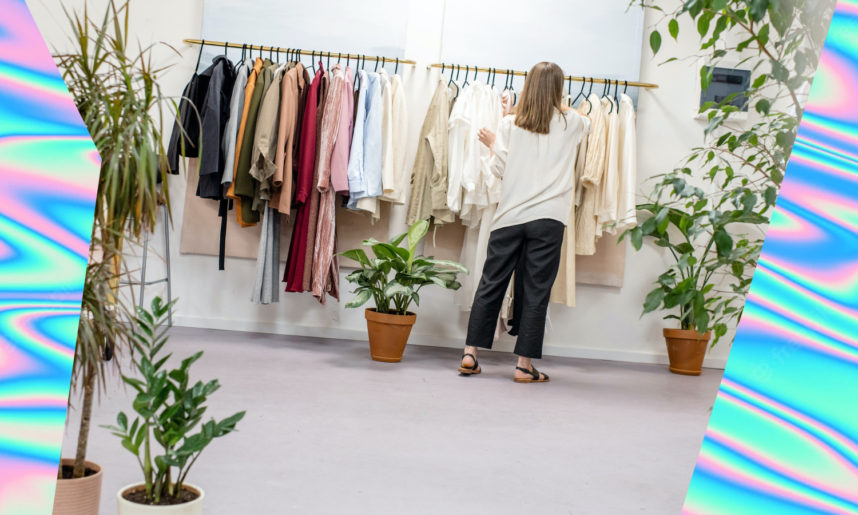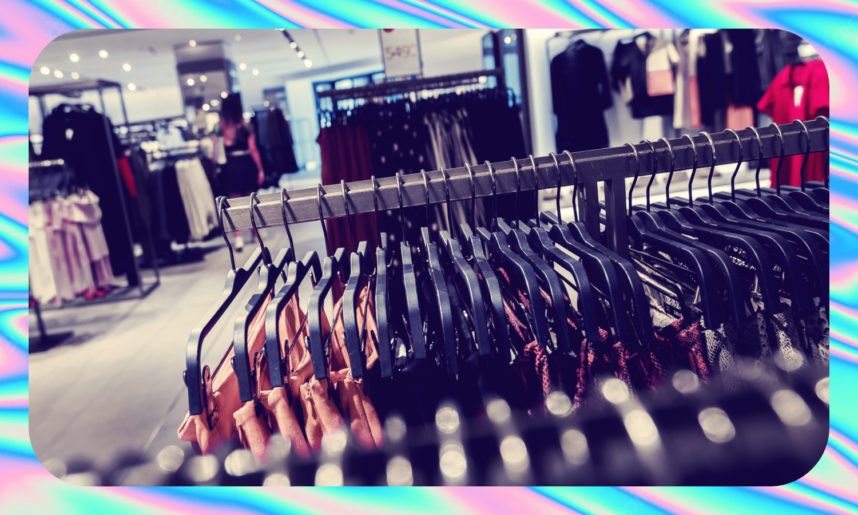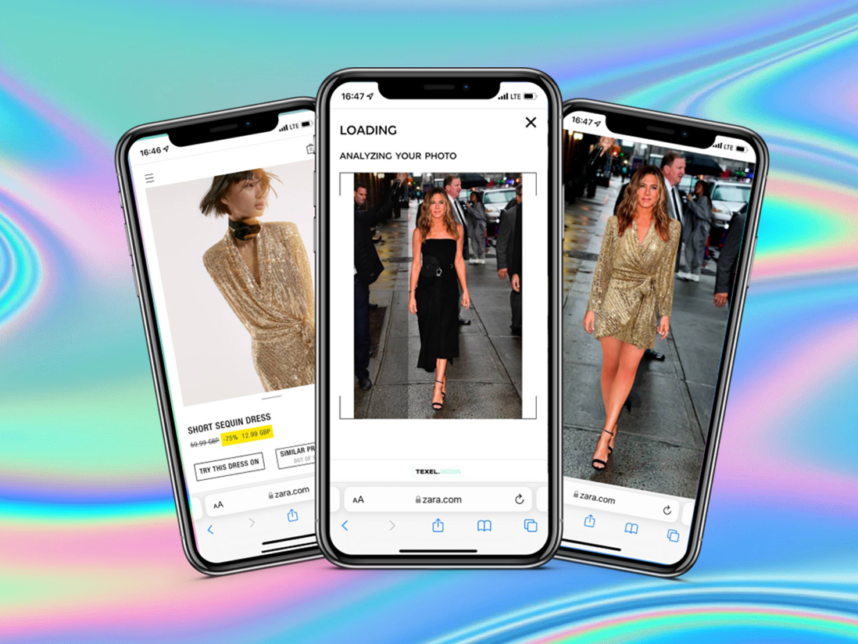Solving Fashion Returns Epidemic for Ecommerce
Fashion | Ecommerce
06.05.2022

Product returns have long been an acute problem for the booming e-commerce fashion industry. With the growth of online channels and increasingly lenient product return policies, the way consumers interact with retailer brands and make purchasing decisions changed forever.
It has never been easier to order products online, try them on at home and return anything (or everything) that you do not want, knowing that you will receive a full refund. American consumers returned an incredible $428 billion worth of goods in 2020. A quarter of the total return figures came from e-commerce sales, most of which was from apparel retailers.
“Return rates for online apparel purchases exceed 25% of total sales.” - McKinsey Returns Management Survey
Dealing with such enormous quantities of product returns comes with serious operational challenges that eat into profit margins, undermine consumer loyalty and lead to inefficient operations.
Why is solving the product returns problem beneficial for your fashion business?
Solving the product returns problem is one of the key challenges that fashion retailers are trying to crack. Returns are not only costly for the business, but they also undermine consumer confidence and affect the overall shopping experience. Below are some of the reasons why solving the product returns problem is crucial for the success of your fashion business.
Avoiding hefty costs
The product returns caused by poor fit, erratic sizing and bracketing are costing a small fortune to ecommerce fashion retailers. This is particularly expensive for retailers that offer free shipping & free returns.
These retailers have to cover not only the outgoing cost of sending the product to the consumer, but also the expenses associated with the shipping of product returns, item processing and restocking.
According to a Barclaycard survey, 57% of retailers say that dealing with returns has a negative impact on the day-to-day running of their business. Meanwhile, 20% say that they had already increased the prices of products to cover the costs of product returns.
Increasing consumer confidence
Studies show that problems related to finding the correct product size and fit - as well as additional efforts caused by the need to return products, frustrate the customers and make them lose their confidence in a brand.
“88% of consumers report that sizing inconsistencies make them feel frustrated”
As consumers get frustrated and confused with sizing and fit disparity, they stop shopping with brands that they lost their confidence in.
Leveraging social proof
Social media and social proof are becoming ever more important in making purchasing decisions with up to 95% of online shoppers relying on product reviews when making a purchasing decision. This is especially true of Gen Z, who rely on social media for their shopping inspiration in 97% of cases.
The fit and sizing aspect of a product are crucial for any consumer, and large platforms such as Shein and Amazon have already introduced product review categories that are specific to product size and fit. This option allows customers to indicate if the product fit and size were as expected when reviewing the item.
As customers are keen to share their shopping experience online, it is now particularly important that brands get positive recommendations from micro-influencers to keep up their brand loyalty.
Fashion Returns: The main reasons for returning clothing
E-commerce product returns are a complex issue caused by a variety of reasons both from the retailer and shopper perspective. Ranging from poor fit and sizing to lenient returns policies, below are the most common reasons for product returns to occur:
Wrong Size
According to research by Narvar, an American customer experience platform, the number one reason for consumers to return the product is the wrong size.
“55% of shoppers claim that size is the main reason for returning an online purchase.” - Bizrate Insights
As people, we are diverse and come in all shapes and sizes, therefore finding the perfect fit just by looking at the product size chart, description and image is not always easy. Having multiple size charts within one brand or a product line makes finding the correct product size even more complicated.
Bracket shopping
As most people do not know their correct body measurements, and the size charts provided by fashion brands are often not clear enough, shoppers often end up buying several sizes of the same product with intention to return the ones that do not fit.
This practice has become so widespread that it even has its own term - “bracketing”. The Narvar study confirms that 58% of consumers engage in bracketing when shopping .
Some retailers are in fact encouraging this practice in order to promote consumer confidence. However, this only exacerbates the product returns problem whilst increasing business costs.
Lenient Returns Policies
Many retailers view simple return processes as a valuable tool for maintaining consumer loyalty. As companies go above and beyond to offer free and uncomplicated product returns, consumers have grown to expect them whenever they shop online.
According to Barclaycard, 49% of shoppers claim that retailer return policies influence where they choose to shop, with 18% of shoppers reporting that they’ll only choose a retailer that offers free product returns.
Poor Fit & Style
Another common reason for consumers to return clothing items is the product fit and style. In many cases, the style of the product may be somewhat different as to what was advertised on the website. As a result, consumers are left disappointed that their expectations regarding the product look and fit were not met.
“70 percent of returns were caused by poor fit or style, suggesting that shopping tools are the key lever for preventing returns and improving consumer experience.” - McKinsey
Additionally, many shoppers can’t visualise what a specific style or colour would look like on them, particularly if they haven’t tried the combination before. As consumers, many are not necessarily aware of body types and colour palettes, and therefore often struggle to make an informed purchasing decision without trying the item on first.
The issue that makes this problem even more acute is the fact that whilst browsing online, consumers only see perfectly fitted products on models. This creates a false expectation for the consumer that the same product should look equally as good on them. The reality however is that the chosen models were selected because the product suits them, in terms of both the colour and the physique.
What can fashion brands do to solve the ecommerce returns problem?
Fashion returns undermine the profitability of fashion retailers affecting the overall success of the business. We collected the best industry practices for ecommerce product returns management that fashion brands can take advantage of to thrive in a highly competitive market.
Improving product clarity
As fit technologies continue to advance year-on-year, ecommerce fashion brands now have a unique opportunity to integrate state-of-the-art solutions that can help with reducing product returns and improving the overall user experience.
Texel.Moda created the only all-around virtual fitting room experience that combines a personalised data-driven size recommendation and virtual try-on experience. It helps fashion brands to address the two most common reasons for product returns - poor sizing and fit.
The solution utilises product photos available on the brand’s website making it easy for retailers to scale this technology. To use the virtual fitting room experience by Texel.Moda, shoppers simply need to choose an item and click on the widget button on the product page. The solution then displays a quick sizing questionnaire which provides an accurate size recommendation and enables the shopper to try-on the product virtually within seconds by uploading the photo of themselves.
The combination of personalised size recommendation and the virtual try-on feature is the ultimate tool that is driving sustainable growth of ecommerce fashion businesses whilst helping to resolve the product returns problem. Improved consumer confidence & brand loyalty, increased engagement levels, seamless integration processes and reduced product returns are just some of the benefits that are enjoyed by the early adopters of this technology.
Providing Comprehensive Sizing Guides
Providing comprehensive sizing information is crucial for enabling shoppers to make an informed purchasing decision.
Measuring all apparel parameters and providing this information on the products page is a time-consuming process that might not necessarily make a difference for the consumer.
Brands can however take advantage of next-gen technology to save themselves time and effort and implement a size recommendation tool – such as the one by Texel.Moda. Our technology provides data-based size recommendations within seconds helping shoppers to eliminate the guesswork when choosing the correct product size.
Our technology provides clients with an accurate size recommendation and product fit guidance, based on just several simple questions about the height, weight, age, and body shape. With the integration of this solution on the product details page, customers are able to make more informed decisions that result in 40% less product returns.
Implementing Fit Technology
Digital fit and sizing solutions help customers to find the perfect product for themselves, therefore eliminating the need for bracket shopping.
The size recommendation tool by Texel.Moda can be combined with our unique virtual try-on feature for a better virtual fitting room experience. The solution helps customers to address the product fit issue by allowing them to virtually try-on any product before purchasing.
This tool is easy to use, simply requiring customers to upload a front-facing full-body photo of themselves. Within seconds, they receive an accurate visualisation of their chosen item on the uploaded photo.
This virtual try-on feature helps to increase consumer confidence and engagement, to increase adoption rates, as well as to increase conversion rates by up to 50%.
Streamlining Product Deliveries
68% of European consumers report having an issue with delivery in the last three months. After having a negative experience, 23% of respondents lost trust in a retailer and did not purchase any products from them again.
Many consumers purchase garments for a special occasion, meaning that timely deliveries are crucial for a positive customer experience. Retailers should provide clear and realistic delivery dates on their website to make sure consumers are aware of them before making a purchase.
Refining Product packaging
Receiving broken or damaged items is one of the common reasons for product returns that negatively affects customer satisfaction. Making sure that the product wrapping is sufficient and fully protects the items during transportation is crucial for resolving this problem.
However, the problem with damaged products is not always down to poor product packaging. On some occasions, it could be the courier company that does not provide the expected level of service leading to the goods being damaged as a result.
Taking the time to assess the courier’s performance and track the amount of product returns coming from a particular courier service will help with finding out the root cause of the problem.
Would you like to know more about how to use fit technology for your fashion business to decrease returns? Simply GET IN TOUCH with our team!







